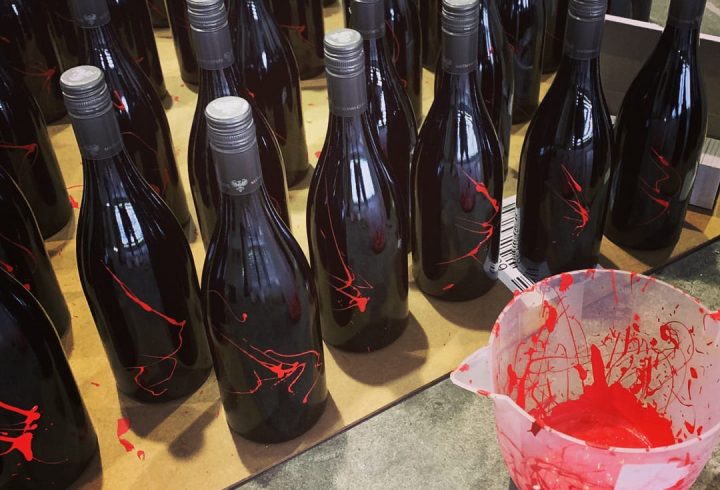Wild Yeast to Wild Holly

We sat down with Ben McNab, our youngest winemaker, to find out more about his amazing new vintage, Wild Holly.
What inspired you to make this wine?
I’ve had previous winemaking experiences with some wonderful mentors who were playing around with similar concepts. I wanted to stretch this further using zero additives throughout the entire process.
I wanted to explore what this fruit could appear like without the conventional winemaking approach, essentially stripping back the layers, and starting from the ground up –highlighting the fruit; not the Winemaker’s tools.
I’m very interested in the building blocks of wine and tannin profiles are central to this. 100% whole cluster ferments provide a wider range of tannin in higher volumes, so you have more building blocks to play with, and a gentle winemaking approach kept this wine from being over-extracted.
The 100% Whole Cluster theme has been around a long time but was untested at this vineyard. Working for Matahiwi Estate and within a passionate team allows us creative freedom, and pushes us to trial new processes and techniques. We explore innovations across the wine industry, bring ideas back and mould them to fit our creative vision.
What’s ‘Wild’ about it?
The ‘wild’ relates to the indigenous (wild) yeasts from the vineyard that naturally occur on the grapes and vines, and go with the fruit into fermentation. These yeasts are ‘wild’ as they’re not cultured in a lab, but in our natural Matahiwi environment.
And the fermentation has its own freedom to run ‘wild’. With no additives (nutrition, acid, sugar, etc), no temperature control and minimal cap management, the yeast really are in total control of how the final wine presents.
This is a single clone wine – only gorgeous hand-selected, bunches of the Abel Pinot Noir clone were used. The winemaking was very old-world. No additives, including no sulphur, and pigéaged (foot plunged) once-per-day with a total time on skins of 11 days, before the free run wine was drained to second-fill French oak barrels for 8 months. Bottled unfined and unfiltered.
What’s the finished wine like?
Being 100% whole cluster, the tannin profile and aromatic diversity in this wine is quite different to our other Pinot Noirs. Expect more tannin, making the wine denser and bigger, and herbal/floral aromatics with layers of spice – think nutmeg, cinnamon, ginger and anise. I often refer to this in my notes as a “hot-cross bun” character.
What do you recommend with this wine?
Explore this wine when your mind is curious! It’s a big dense wine with earthy tannin and a full body, so dishes with a rich core and hint of acid/ freshness to cut through it all. Think seared duck breast, buttery parsnips, grilled leeks, and heirloom tomatoes.
The packaging is cool, how did that come about?
The red paint is my little stamp, as the wine itself was made in a very hands-off approach. Red because it’s bold and powerful, like the decision to bottle unsulphured, and the structure of the wine.